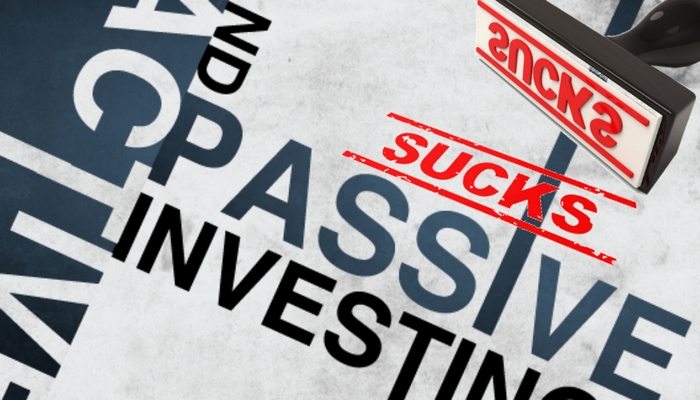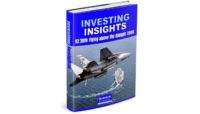Try this: Type ‘Danger of passive investing’ into Google. Then type ‘Danger of passive smoking’ into Google. Now compare the pair.
Craig Lazzara from S&P Dow Jones Indices suggested this exercise and I think it is highly illuminating.
When I did it, ‘Danger of passive investing’ gave 16.5 million results.
By comparison, ‘Danger of passive smoking’ gave only 229,000 results.
Now we all know that passive smoking can slowly kill you. Kill you dead. Kaput. Slowly and painfully.
But hang on, ‘Danger of passive investing’ gave 72 times as many results.
What the E-T-F is going on? When did passive investing morph from the good guys to the bad guys… or did it?
Let’s start by examining who is making the claim that passive investing is bad for you and why they may be making that claim.
In my opinion, they fall into two camps:
1. Prominent active fund managers
2. Publishers of financial newsletters
Fund managers will lose fees: Too bad, so sad
“A report published in March by Morgan Stanley and Oliver Wyman suggested the asset management industry could suffer a 30% drop in revenue by 2019 if money continues to favour low-cost products, driving down fees across the board.”
I always say follow the money and there’s your hip pocket nerve motivation, right there. Passive investing could erode active fund manager fees by 30% in 2 years’ time. If you’re an active fund manager and you are not terrified right now that your fees will be whacked by the rise of passive investing, then you’re blind.
We know active fund managers are already being forced to drop their fees as a direct result of passive investing, even in Australia. In early 2017 an article titled ‘Platinum cuts fees, readies to launch ETMFs’ (SMH 28 April 2017) stated “Platinum Asset Management says it will drop the fees on its suite of managed funds and launch a pair exchange traded managed funds as it seeks to reverse hundreds of millions of dollars of outflows.”
So if I were an active fund manager, it would be completely rational for me to scream from the rooftops right now about how bad passive investing is. I wouldn’t even be averse to using a bit of hyperbole because understatement isn’t going to cut it. A headline such as “Passive investing involves risk” may be accurate but it just isn’t going to help me. I need something that scares people.
“It’s dangerous”. “It’s Marxism”. “It’s dumb”. “It’s a Ponzi scheme”. “It’s for suckers”. “It’s leading people astray”. The more emotional the headline, the better.
Active fund managers lose from passive investing in two ways – lower inflows into their funds (or net outflows) as investors increasingly shift their allocations to passive investing and increased competition that forces them to drop their fees to remain competitive.
Poorly performing active fund managers will go backwards which, when you are running a bonus based business, is frankly terrifying. Even well performing active fund managers will inevitably face fee compression – even they will get paid less.
We liken old school active fund managers bewailing the dangers of passive investing as akin to Gerry Harvey shouting about the dangers of Amazon coming to the Australian retail market. Sure, it’s easy to understand why they will put forward every sensational argument under the sun but it is really hard to feel sorry for them. They’ve enjoyed fat, lazy fees for years and years and now they face stiff completion. ‘Too bad, so sad’ as my kids put it.
Of course you’d have to be bling Freddy to not see there are some legitimate negative effects from passive investing, but no matter how sensationally you complain you cannot fight this financial disruption, especially when many consumers end up better off.
Financial newsletters – If it bleeds it leads
Put bluntly, any media will be read more (or watched more or more listened to) if it’s about fear than if it’s about pretty much anything else.
The exact same rule applies in the financial media. If the market is slightly ‘bleeding’ (down), then you can expect to read headlines about ‘haemorrhages’ and ‘death’ (market plunges, tanks, billions lost, etc).
Compare the pairs below and consider which heading you’d more likely click on:
- ‘Market plunges 3%’ OR ‘Market rises 3%’
- ‘Passive investing involves risk’ OR ‘Passive investing is a Ponzi scheme’
- ‘ETFs are for suckers’ OR ‘ETFs are best for non-professional investors’
- ‘ETFs are dumb money buying everything OR ‘ETFs give low cost easy diversification’
- ‘Passive investing is leading investors astray’ OR ‘Passive investing is taking funds away from expensive active fund managers’
The more sensational they make the headline; the more likely you are to read the article. An article about ‘The danger of passive investing’ that you can slightly re-word 16.5 million times is always going to be a more popular article.
Apart from the sensational nature of doom and gloom articles, there is also the issue of how boring passive investing is. I have long argued that a key strength of passive investing is one of its key weaknesses – they are as boring as bat shit.
You buy a passive investment and you hold it. You’re not regularly trading so you don’t care about the daily gyrations of individual shares and what company management said today.
When you need to create regular content for an investing newsletter you need a constant source of interesting stories. So shares are great – the hot stock today/this month/this year; the stocks to avoid; the CEO/CFO you must listen to; etc. Copy, paste, churn through companies and slightly re-word the articles each edition. Managed funds are great too – the hot performing fund manager you must listen to; the best picks this fund manager holds; etc. Again, copy, paste, churn through managers and slightly re-word the articles each edition.
As a publisher of an investing newsletter, passive investing doesn’t give you any of that. It gives you no content to fill your newsletter apart from an article every 6 months explaining what passive investing is (and how dangerous it is) and what an ETF is. They are boring and do not help you sell your newsletter.
Why all the fear now?
Why is this claim that passive investing is bad for you receiving more and more press just now?
Let’s put things in a little historical perspective. Those with long financial memories may recall that 30 years ago in October 1987 the 1987 Black Monday crash rocked the world. Fast forward 10 years to 1997 and it was the Asian Crisis and Russian Financial Crisis. Jump another 10 years to 2007 and it was the Global Financial Crisis. Every 10 years in the sevens we’ve had a run of bad luck so it’s hardly surprising with just over 2 months to go in 2017, superstitious markets are jittery about another potential crash.
Next time we will go through 6 of the more sensational headlines that you can expect to see about passive investing.
1. It’s Marxism!
2. ETFs are for suckers
3. It’s a Ponzi Scheme
4. Dumb money buying everything
5. Passive investing is distorting markets
6. ETF investing is just dumb








Leave A Comment